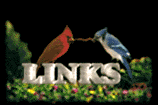 SHANGRALA'S
SHANGRALA'S

SCIENCE
2024
BREAKTHROUGHS!

Every year, science takes us closer to understanding the mysteries of the
world around us - and even within us. The more we learn, the more we push
the boundaries of what we know.
While some discoveries uncover new possibilities for life beyond Earth,
others offer hope for tackling diseases and improving human health.
Fascinating Scientific Advances Of The Year. Enjoy! :)
Hidden oceans in the outer solar system.
For decades, Earth's oceans were thought to be unique, but recent discoveries
have upended this belief. Jupiter's moon Europa first hinted at hidden oceans
in the 1980s, when strange electrical signals suggested a vast saltwater
ocean beneath its icy crust. This revelation sparked NASA's Europa Clipper mission,
which launched in October to study Europa's ocean and assess its
potential for life. In 2024, further evidence came to light, expanding this
list of celestial bodies. Saturn's moon Mimas was found to have a buried ocean
in February, followed by Uranus' moon Miranda in October.
These findings are not just about water. Life as we know it depends on liquid
water, making these moons intriguing candidates for hosting microbial or even
more complex life forms. The discovery of multiple oceanic moons has widened
the scope of where we might find life within our own solar system, offering
exciting new possibilities for future exploration.

Humans age in bursts, not gradually. While aging feels like a gradual process,
scientists have discovered that it happens in bursts. Research this year
identified two critical phases: one around age 44 and another at 60. A study
involving 108 volunteers tracked changes in their biochemistry, revealing that
midlife aging involves shifts in cardiovascular function and how the body
processes alcohol, fats, and caffeine. By the time people reach their 60s,
changes in immune regulation and carbohydrate metabolism take center stage.
These bursts of aging appear to combine biological and lifestyle factors.
Stress, diet, and other habits likely exacerbate these natural shifts. Experts
suggest that understanding these phases could help develop targeted
interventions to improve health during these pivotal periods. These findings
challenge our perception of aging, showing it's not a slow decline but a series
of rapid changes that affect our bodies.
Revolutionizing home health check-ups with BeamO.
Gone are the days when medical check-ups always required a visit to the doctor.
The BeamO device from Withings brings clinical-level diagnostics into the home. Resembling a TV
remote, this device combines four sensors to measure vital signs such as body
temperature, lung activity, heart rhythms, and blood oxygen levels. Up to eight
individuals can use the BeamO, with results synced to an app for tracking or
sharing with doctors remotely.
AI's role in mapping protein structures. Artificial intelligence has
revolutionized our understanding of proteins, the building blocks of
life. Using an AI model called AlphaFold2, researchers have mapped the
structures of over 200 million proteins, a task that would have taken
decades using traditional methods. This achievement, celebrated with
the Nobel Prize in Chemistry, opens new doors in biochemistry.
Understanding protein structures is crucial for tackling diseases like
Parkinson's and malaria. With precise models, scientists can study how
proteins interact and identify ways to counteract harmful processes.
AlphaFold2's ability to predict structures has advanced research on
antibiotic resistance, neurological disorders, and even cancer. Health
experts note that this breakthrough offers unprecedented insights into
biochemistry, providing tools to design targeted treatments for complex
diseases.
AI-powered toilet seats for health monitoring. Health monitoring took a
leap forward with the TrueLoo, an AI-powered toilet seat developed by Toi
Labs. This innovative seat looks ordinary but uses optical sensors to
analyze stool and urine, offering real-time health data. Currently used
in over 50 senior living facilities, it tracks subtle changes in waste to
detect potential health issues early.
There's a user-friendly app in the works for TrueLoo, so people can access
their own data. Experts believe this technology could revolutionize
preventive care by detecting conditions like digestive disorders and
chronic illnesses early. Continuous monitoring like this may one day
become a staple in personal healthcare, changing how we approach wellness.
A simpler way to detect colon cancer. Colorectal cancer screenings often
deter people due to invasive procedures like colonoscopies. Guardant Health introduced
the Shield test, a blood-based screening method approved by the FDA. Unlike
traditional tests, Shield analyzes blood samples to detect cancerous tissue
with 83% accuracy.
Colorectal cancer is one of the leading causes of cancer deaths in the world,
yet millions of eligible people skip screenings. Experts believe that making
the process less invasive could save countless lives. The Shield test's
simplicity encourages routine testing, enabling early detection and treatment,
which are critical for improving survival rates. This innovation offers a
promising step forward in the fight against cancer.

Memory formation and dendritic translation. This year brought significant
advances in understanding memory formation, thanks to new research on
dendritic translation. This process involves bursts of protein production
in neuron branches, which are essential for forming and storing memories.
Scientists used advanced tools to uncover previously unknown regulatory
mechanisms that drive this activity.
These findings have
far-reaching implications. Experts note that understanding dendritic
translation could lead to better treatments for memory-related disorders like
Alzheimer's. Additionally, the research expands our knowledge of how memories
are formed, stored, and recalled, providing a deeper understanding of the
brain's complex processes.

Autism and the role of the ASTN2 gene. Researchers have linked the ASTN2 gene
to autism spectrum disorder (ASD), revealing its impact on brain development.
Research showed that removing this gene in mice led to behaviors commonly
associated with autism, such as reduced social interaction and increased
hyperactivity.
These findings shed
light on the genetic underpinnings of ASD and provide a foundation for
further studies. Health professionals believe that understanding genes like
ASTN2 could improve early diagnosis and lead to better-targeted therapies. This
breakthrough offers hope for individuals with autism and their families by
paving the way for future advancements in treatment.

Vitamin A's surprising role in healing. Vitamin A has long been associated
with vision and immune health, but recent research uncovered
its unexpected role in wound repair. Scientists found that hair follicle stem
cells rely on retinoic acid, a derivative of Vitamin A, to promote healing by
temporarily adopting traits of other cell types.
This discovery also opens up intriguing possibilities regarding Vitamin A's
role in cancer treatment. Experts suggest that understanding this process
could lead to new therapies for both wound care and cancer suppression. The
findings open new avenues for exploring how vitamins influence cellular
behavior in ways previously overlooked.

Hunger and the brain's neural circuit. The impulse to eat may be simpler
than we thought. Researchers identified
three specific neurons in mice that link hunger signals to jaw movements. Activating these neurons suppressed
appetite, while inhibiting them caused compulsive chewing, showing that
hunger may operate as a reflex-like process.
Further findings revealed another neuron type that counters hunger by
promoting satiety. This dual system helps regulate eating behaviors,
balancing hunger and fullness. Experts believe this research could lead to
innovative treatments for obesity and other metabolic disorders by targeting
these neural pathways.
Evolutionary adaptation in fruit flies. Fruit flies rely on pheromones and
visual cues for courtship, and research this year
revealed how they adapt these behaviors over time. Rather than developing new
neural pathways, fruit flies repurpose existing circuits to integrate novel
stimuli. This efficient system allows rapid behavioral changes without the
need for extensive evolutionary rewiring.
While the study focuses on fruit flies, it offers broader insights into how
social behaviors evolve. Scientists see this as a model for understanding
adaptation in other species, highlighting the brain's remarkable ability
to adjust to environmental changes.

Cancer's fatty shield. Cancer cells employ unexpected strategies to evade the
immune system, and new research revealed the role of glycosphingolipids in
this process. These lipids act as a shield, hiding inflammatory signals that
would otherwise alert the immune system.
By disrupting glycosphingolipid production, scientists found that cancer
cells became more vulnerable to immune responses. This discovery offers
potential pathways for enhancing immunotherapy treatments, making them
more effective in targeting aggressive cancers. Experts note that
understanding lipid metabolism could lead to groundbreaking advancements
in cancer care.
All Images Source
![]()
SHARE THIS WITH ALL
YOUR SCIENCE LOVING FRIENDS! :)

![]()
SEE ALSO: AI Wonders!

^BACK To TOP^

For those of you who Want More FUN - Visit The Shangy Fun List! Variety is the
spice of life! The Shangy Fun List is an ezine packed full of Poems, Inspirational and
Heart Warming Stories. Jokes from G to slightly R, and Anything else that just
might make you SMILE! Join In The Free FUN!! ... :)
Yes! Click Here To GO TO THE ARCHIVES!-
![]()
![]()
Like This Page?
If you are looking for more, here are some good places to start:

Moses Bridge!-
Brilliant Logos!-
Recycling Ideas!-
Global Warming!-
Birth Of An Island!-
God's Night Lights 4!-
Little Known Things!-
World's Fastest Cars!-
Microscopic Winners!-
World's Top Geniuses!-
Little-Known Geniuses!-
Incredible Architecture!-
Discoveries By Accident!-
Wrath Of Summer 2022!-
Thoughts Into Action 16!-
Germany's Water Bridge!-
Famous Invention Origins!-
Mysterious Ringing Rocks!-
Brilliant Women Inventors!-
People With Unique Brains!-
Mysteries Around The World!-
Great Engineering Achievements!-
A-Z Animated Images!-


 -To SHANGRALA-
-To SHANGRALA-
Special THANKS Goes To FRANCES CAROL For Sharing This With Us.
![]()
Copyright © 1996 Netscape Communications Corporation. Mozilla is
a trademark of Netscape Communications Corporation.
Note: This is an Unofficial God, Jesus Christ, Family, & Cartoon Fan Site.
© All graphics representing Disney characters are copyrighted by Disney.
Likewise all other graphics & music Copyright © by their own Individual Artists.
I do not own any graphics on this site. If you do, please notify me
and I'll give
you proper credit, a link, or remove it immediately according to your wishes.
~*~ Copyright © 1997-2025 Elrhea M. Bigham ~*~